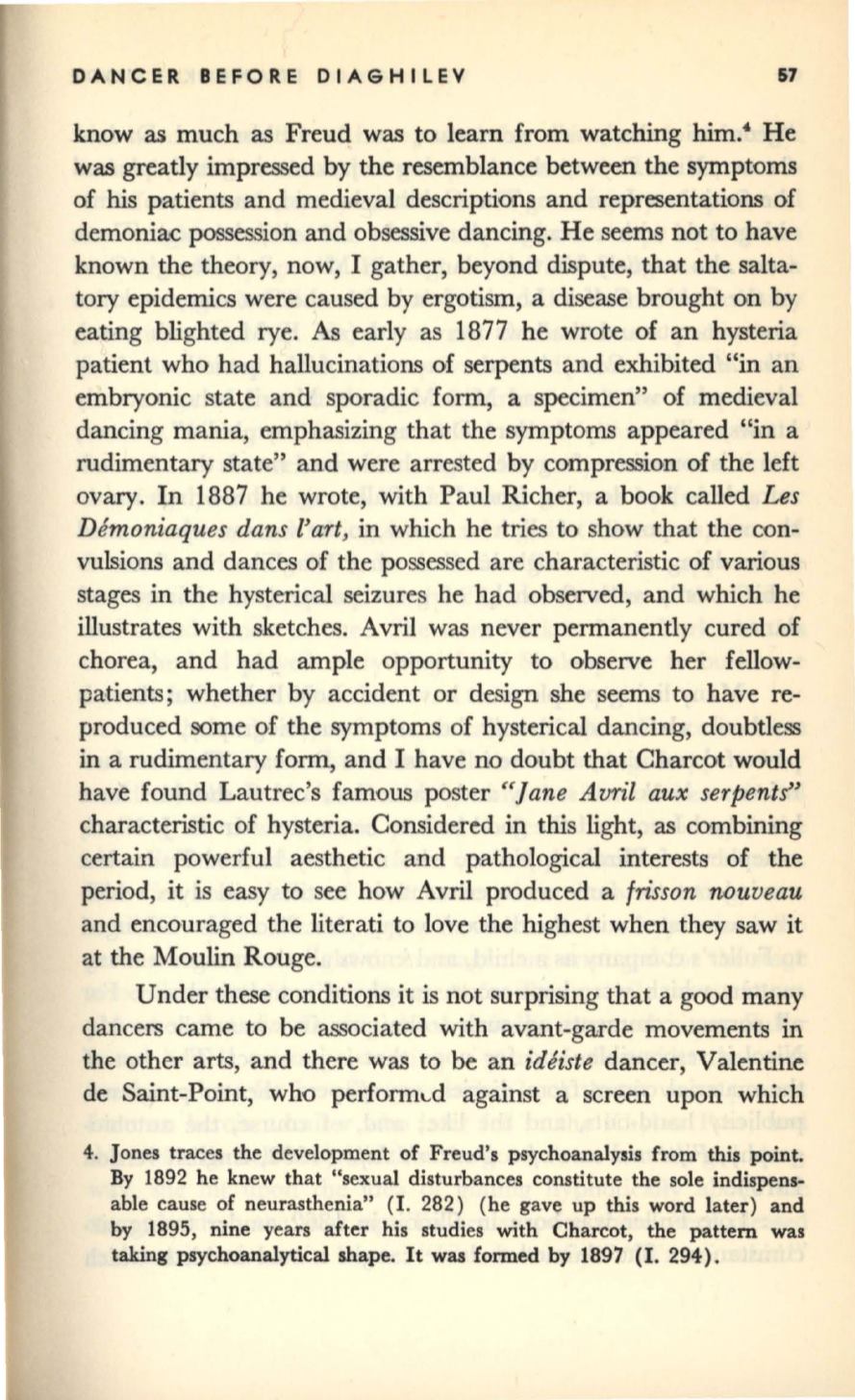
DANCER BEFORE DIAGHILEV
57
know as much as Freud was to learn from watching him! He
was greatly impressed by the resemblance between the symptoms
of his patients and medieval descriptions and representations of
demoniac possession and obsessive dancing. He seems not to have
known the theory, now, I gather, beyond dispute, that the salta–
tory epidemics were caused by ergotism, a disease brought on by
eating blighted rye.
As
early as 1877 he wrote of an hysteria
patient who had hallucinations of serpents and exhibited "in an
embryonic state and sporadic form, a specimen" of medieval
dancing mania, emphasizing that the symptoms appeared "in a
rudimentary state" and were arrested by compression of the left
ovary. In 1887 he wrote, with Paul Richer, a book called
Les
Demoniaques dans l'art)
in which he tries to show that the con–
vulsions and dances of the possessed are characteristic of various
stages in the hysterical seizures he had observed, and which he
illustrates with sketches. Avril was never permanently cured of
chorea, and had ample opportunity to observe her fellow–
patients; whether by accident or design she seems to have re–
produced some of the symptoms of hysterical dancing, doubtless
in
a rudimentary form, and I have no doubt that Charcot would
have found Lautrec's famous poster
"Jane Avril aux serpents"
characteristic of hysteria. Considered in this light, as combining
certain powerful aesthetic and pathological interests of the
period, it is easy to see how Avril produced a
trisson nouveau
and encouraged the literati to love the highest when they saw
it
at the Moulin Rouge.
Under these conditions it is not surprising that a good many
dancers came to be associated with avant-garde movements in
the other arts, and there was to
be
an
ideiste
dancer, Valentine
de Saint-Point, who performLd against a screen upon which
4. Jones traces the development of Freud's psychoanalysis from this point.
By 1892 he knew that "sexual disturbances constitute the sole indispens–
able cause of neurasthenia"
(1.
282) (he gave up this word later) and
by 1895, nine years after his studies with Charcot, the pattern was
taking psychoanalytical shape. It was formed
by
1897 (I. 294).


